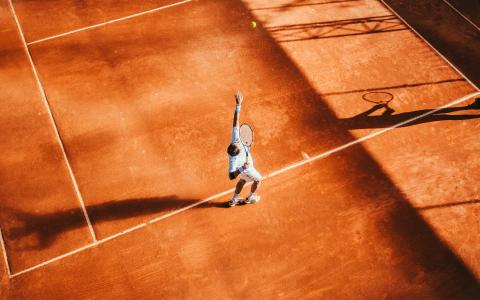
Some countries are again allowing non-contact sports like tennis, as long as players and venues stick to strict guidelines aimed at minimizing health risks.
Here’s what it’s like to play at a London club under Britain’s Lawn Tennis Association (LTA) guidelines:
The rules
* Two players per court maximum (unless one household); no indoor courts
* No on-court benches; net winders removed
* No sweeping of artificial clay courts by players
* Use your own clearly marked balls
* No handshakes or high-fives
* No drinks after play: clubhouse bar shut
The venue
It was very quiet and the unspoken message is: don’t hang around. The LTA guidelines allow clubs to keep basic facilities like toilets open but the Camber Lawn Tennis Club in south London had, like many, chosen to shut its clubhouse. Players must show up no more than 10 minutes before their session and leave promptly afterwards. Spectators are discouraged. Play is for recreational or practice purposes, no tournaments or league matches yet.
The court
Pretty much the same, except players’ benches have been removed along with net winders to ensure as few surfaces as possible to touch. The artificial clay had not been swept by the preceding players, as normal etiquette would require. LTA guidance suggests that dragging is now done by one nominated club member.
The equipment
You must bring your own personal set of balls and only serve with those. Between points you can send your opponents’ balls back to their side by scooping them up with a combination of racket and foot, so it doesn’t interrupt the flow of play that much. The main thing is remembering not to pick one up by mistake and identifying your own balls - the LTA recommends marking them in some way.
The play
With all that out of the way, play was remarkably similar to normal. Was the net a little more saggy than usual for not being eased down overnight? After a spate of dead net cords - when the ball clips the top of the net and scrapes over onto the other side - we thought so. The stipulation that players set up camp on opposite sides of the court made for less between-game banter.
Post-match
On the plus side, you no longer have to remember whether your partner likes to end a match with high-fives, fist bumps or a handshake - it’s now arms extended over the net for a socially distant click of the rackets. The big downside? No lingering with a cool drink afterwards.
This article originally appeared on Reuters.



